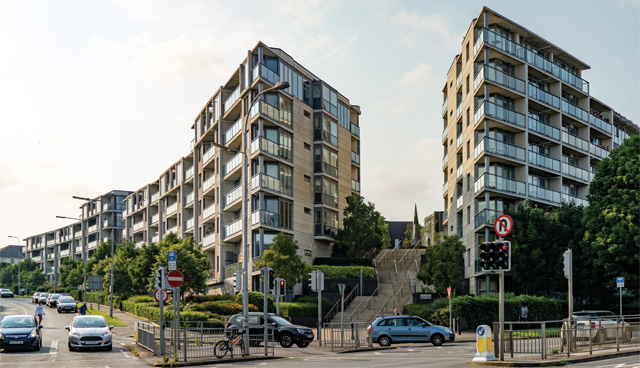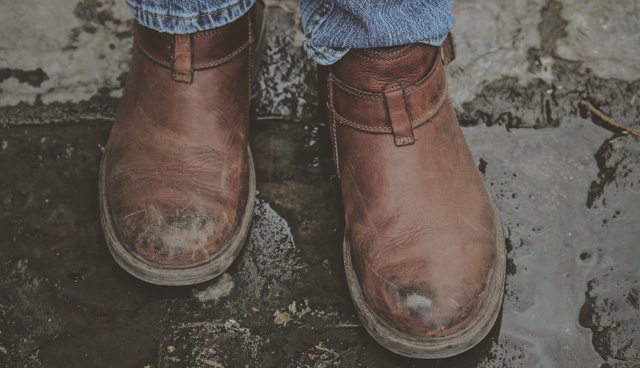Home ownership rates collapse

Income poverty and material deprivation, two key indicators of living standards, have declined by one-half and a one-quarter respectively in Ireland between 1994 and 2019, a new report has found. Despite this, high incidence of low living standards among lone parents, their children, and those of working age in households without anyone in paid work.
In the report, Poverty, income equality and living standards in Ireland by the Economic and Social Research Institute (ESRI), it was found that Irish income equality is at its lowest ever recorded level “on the eve of the pandemic”. Ireland’s score on the Gini coefficient, a measure of the distribution of income across populations designed to gauge income inequality, was 16 per cent lower in 2019 than it had been in 1987.
Disposable income growth was also found to have been strong, “if volatile” despite “a lost decade between 2007 and 2017”. Income growth over the last three decades has been “remarkably strong”, averaging more than 3 per cent per year in real terms. Income growth was also found to have been broad-based, rising by 3.6 per cent per year on average for the lowest-income fifth of people compared to 2.7 per cent for the highest-income fifth.
Income inequality has risen sharply in most western economies in this period, but the ESRI states that this has largely been avoided in Ireland due to high employment following the 2008 recession. However, high incidence of low living standards among marginalised groupings such as lone parents and intergenerational inequality in areas such as homeownership will remain as causes for concern.
- One of the key findings of the report is that “in addition to poorer prospects in the labour market, a growing share of young adults are facing high housing costs”. This is attributed to the collapse of homeownership rates for young adults, from over 60 per cent at age 30 for those born in the 1960s to less than 20 per cent for those born in the late 1980s, meaning many more young people are now “more exposed to rapidly rising rents, especially in urban areas”.
- More than a fifth of those born in the 1980s were paying more than 30 per cent of their disposable income on housing at age 30, while only 13 per cent of those born in the 1970s were doing the same. ESRI data did not extend back far enough to survey older generations at age 30, although it was found that less than 10 per cent of those born in the 1960s spent more than 30 per cent of their disposable income on housing around age 40, compared to 13 per cent of those born in the 1970s.
- The report states that the “combined effect of these developments is to cast a pall over the prospects of young adults and should be cause of serious concern for society at large”. It then suggests that one area where “policy can help is ensuring the provision of high-quality active labour market programmes with sufficient capacity to cater for the numbers that will need them in the years ahead”; these policies, it states can “tackle the root causes of high rents [and] will also disproportionately benefit those younger adults who otherwise risk being left behind”.

Living standards
- Rates of income poverty and material deprivation, two key indicators of low living standards, have declined substantially across the population as a whole: by one-quarter and by one-half respectively between 1994 and 2019. Under all three definitions of income poverty, where the poverty line is defined by a rate of median equivalised disposable income, the rate rose over the 1990s, from 17.8 per cent in 1987 to 21.4 per cent in 1999 using the 60 per cent of median equivalised disposable income definition; from 8 per cent to 12.7 per cent using the 50 per cent equivalent definition; and from 4 per cent to 6 per cent using the 40 per cent definition, despite a fall in the early 1990s. All three measures then declined substantially over the 2000s such that they had fallen below their 1987 level in 2010.
- However, the report found consistently high levels of income poverty and material deprivation among lone parents, their children, and those of working age in households without anyone in paid work. This predates the Great Recession and has been an enduring feature of Irish society since at least the early 1990s. Material deprivation is here defined as a household unable to afford two or more of the following items: two pairs of strong shoes; a warm waterproof overcoat; new (not second-hand) clothes; replacement of worn out furniture; a meal with meat, chicken, fish (or vegetarian equivalent) every second day; a roast joint or its equivalent once a week; home heating during the last year; presents for family or friends at least once a year; drinks or a meal for family or friends once a month; and a morning, afternoon or evening of entertainment once a fortnight. According to the report, child deprivation rates are much higher for children in one adult households. The rate of deprivation for children in one-adult households has stood above 40 per cent in all but three of the years since 1987, and more than 50 per cent for most of that time.
- The report states that “the incidence of income poverty and material deprivation remains closely linked to the absence of anyone in paid work, both in single- and multi-adult households”, which “suggests that the social welfare system may provide a more targeted and effective tool for addressing low living standards than policies to increase low hourly wages”. It is warned that this “should also give rise to concerns about the impact of Covid-19 related job losses, particularly if those who have lost work are unable to return to their previous positions or find new ones for an extended period of time”.





